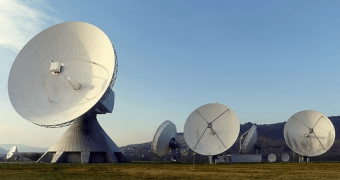
Norwegian telco Telenor announced that it is taking significant steps to address carbon emissions within its value chain. Recognizing the importance of sustainability and environmental responsibility, Telenor is reaching out to its suppliers, urging them to adopt science-based targets to curb their impact on the environment. Spearheading this initiative is Telenor Procurement Company (TPC), responsible for all procurement activities across Telenor's global operations.
Also Read: Telenor and Hafslund Partner to Establish Sustainable Data Centre Company in Oslo
Prioritising Emission Reduction
Telenor says it is actively implementing various measures to reduce emissions associated with its business operations and has highlighted two overarching priorities. Firstly, Telenor is committed to managing its scope 1 and 2 emissions, which refer to direct and indirect emissions under its control. To achieve this, the company is primarily focusing on sourcing renewable electricity. Telenor's preferred approach involves entering Power Purchase Agreements, aiming to incentivize the development of new solar and wind farms.
However, Telenor emphasized that the most significant carbon footprint lies in the emissions generated by Telenor's supply chains, known as scope 3 emissions. These emissions stem from the production of goods and services procured by the company. As such, reducing scope 3 emissions offers the greatest potential impact on Telenor's sustainability efforts. However, Telenor recognizes the need to address its own emissions before requesting suppliers to do the same.
Also Read: Bharti Airtel to Acquire 12.07 Percent Stake in Egan Solar Power
Setting Science-Based Targets
In order to demonstrate their commitment to emission reduction, Telenor has chosen to set science-based targets. Telenor explained that science-based targets align with the latest climate science and are in line with the objectives of the Paris Agreement, which aims to limit global warming to well below 2 degrees Celsius above pre-industrial levels, with an ambition to keep the threshold at 1.5 degrees Celsius.
Typically, achieving science-based targets requires a company to halve its greenhouse gas emissions between 2020 and 2030, ultimately reaching net-zero emissions by 2050. To validate their targets, Telenor says it relies on the Science Based Targets initiative (SBTi), an organisation that promotes best practices in emissions reduction and net-zero targets.
Also Read: Telenor Norway Says Its Network Now Has More 5G Phones Than 4G
Influencing Suppliers
As a prominent procurer of goods and services, Telenor acknowledges its significant leverage in influencing suppliers. However, Telenor emphasized that the intention is not to scare suppliers but to recognize Telenor as an attractive customer and encourage them to play their part in combatting global warming. While some suppliers may initially be apprehensive, Telenor believes that engaging suppliers in sustainability efforts is crucial.
Tackling Scope 3 Emissions
Telenor emphasized that a substantial portion of its emissions, specifically 80 percent of all emissions and 90 percent of scope 3 emissions, originate from the supply chain. Therefore, Telenor's scope 3 target relies on suppliers joining the effort. Telenor aims to achieve this through two approaches: influencing existing suppliers to adopt and pursue science-based targets and increasing spending with suppliers already aligned with these targets.
"We have interacted with suppliers for over a year now and so far, no one is outrightly saying this. However, if we are not making any traction with a supplier, we will inevitably shift our spend to a supplier that has set targets and sees eye to eye with Telenor," Telenor said.
Also Read: M1 Singapore Introduces True 5G Eco SIM to Reduce Environmental Impact
Leading the Industry
Telenor said introducing mandatory science-based targets for suppliers is a significant step forward, although challenges may arise along the way. Telenor remains open to working with all suppliers willing to make efforts to limit global warming while ensuring that any exceptions are approved by top management.
Telenor aims to lead the way in combating climate change and inspire others in the industry to follow suit by actively engaging suppliers and setting science-based targets.















